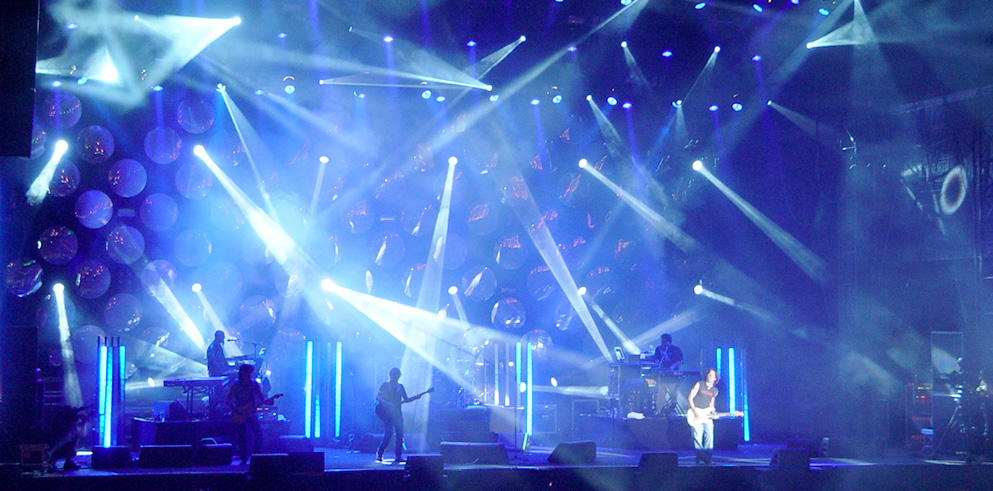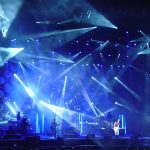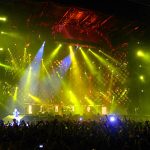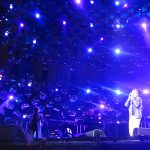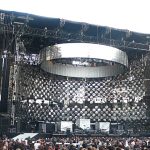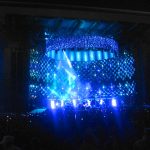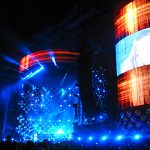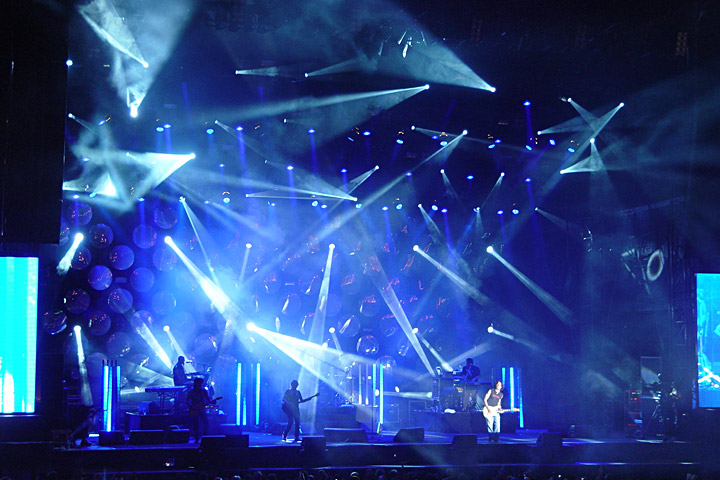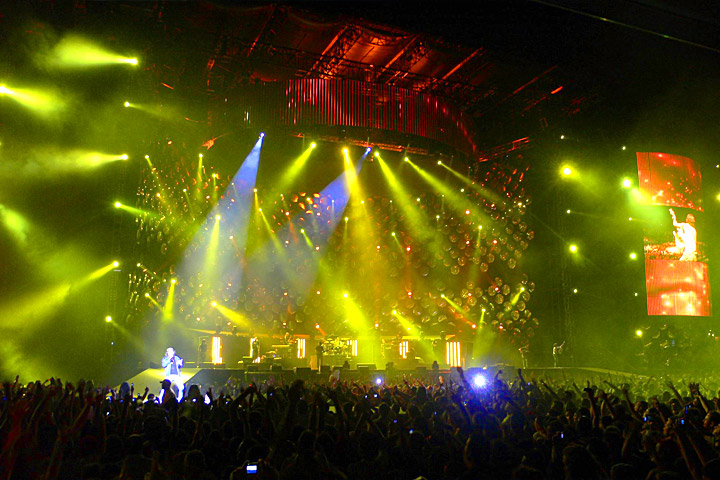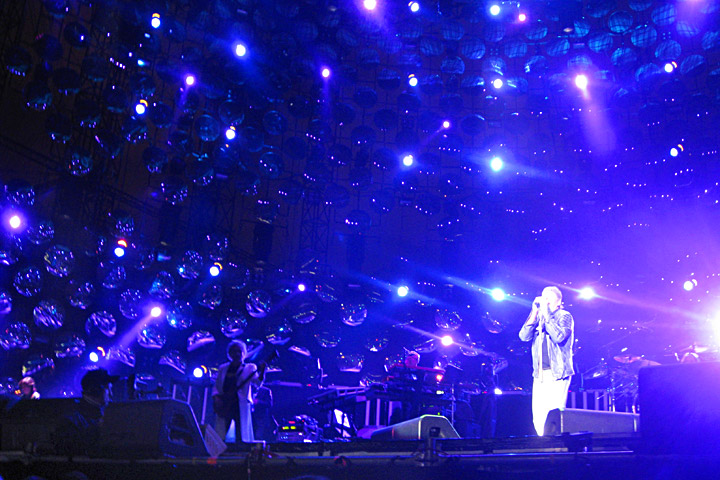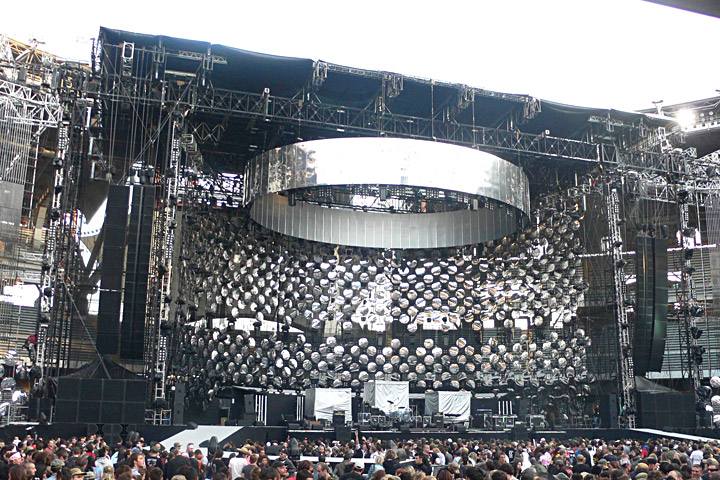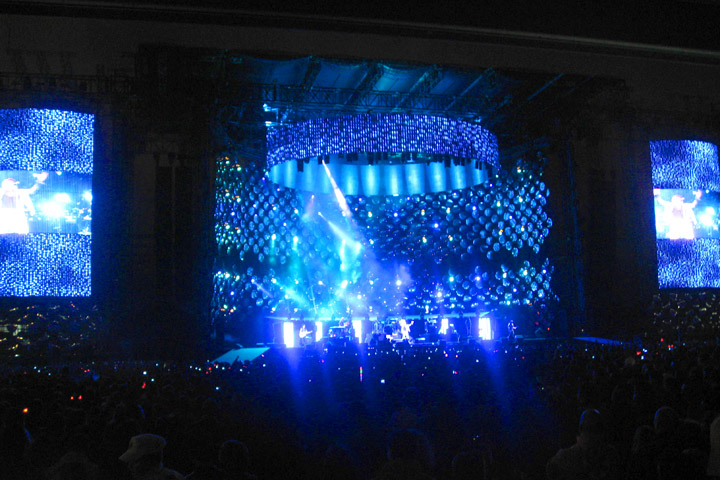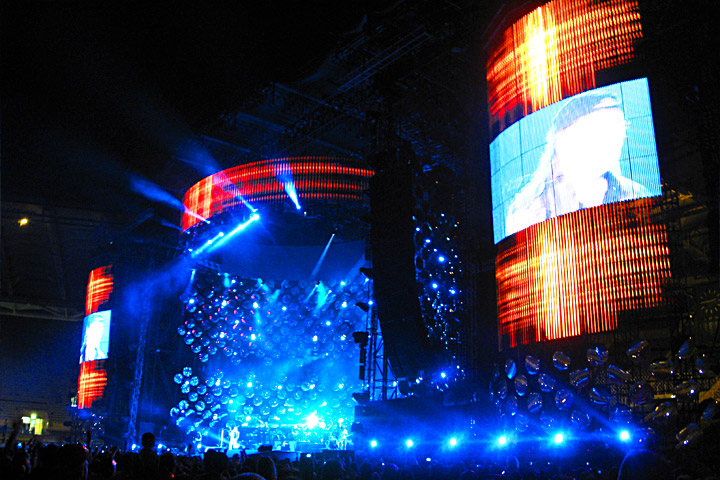With a hundred and fifty songs and twenty albums released in over thirty years of career, Vasco Rossi is today one of the most loved and prolific Italian singer-songwriters. His concerts are always an important event, not just for his loyal fans, but also for all live-sector workers, who consider his shows a sort of overview of the new technology applicable to stages, scenery and sound/video/lighting systems.
The Alpha Beam 300s used in the “Vasco 08 – Live in Concert” tour deserve a special mention. These new Beam Moving Lights made by Clay Paky have a powerful super-concentrated beam, and are increasingly more widely considered a distinctive modern tool for creating professional light shows.
We met Lighting Designer Giovanni Pinna, who has been at the dignified service of Vasco for eighteen years, and asked him to share a few design details with us.
Q. Tell us about the stage, the set design and the lighting design choices, considering the various tour locations.
If we exclude the Heineken Jammin’ Festival in Mestre and the Moon&Stars Festival in Locarno, the “Vasco 08 – Live in Concert” tour was held exclusively in football stadiums. When you design a lighting system for an event like this, one of your priorities is to match the size of the set-up with the locations you are going to choose. Vasco has been a guarantee of large audiences for years, and all the choices concerning the set-up are always majestic! The stage consisted of an imposing roofed structure, complete with a whole host of surrounding mirrors. Unlike normal covered stages, which are usually smaller in size, this one reached twenty-two metres in height, and this feature entailed a whole series of technical and artistic choices.
Q. Several scenic elements share the stage: lots of mirrors, videowalls, lights of various types… How were you able to put all the elements together?
The lighting design has to fit in as perfectly as it can with the set design and the room available. In this case, the unusual configuration of the enormous mirror covered backdrop meant we had to find a special solution so that we could hang more than 200 lights among the mirrors. The lighting service Lime Lite dealt with engineering the backdrop and putting it together from almost 200 modular frames, to which spotlights and mirrors were attached in the most practical and quickest possible way. Once the solution for the backdrop lighting design was found, the rest of the stage was easier to “dress” with light.
During the design stage, the interaction between the various sections (lighting, video, set design, stage, sound and production) was constant, continuous and necessary. A set-up of this size has to be perfectly coordinated and checked by all the parties who take part in its assembly and the success of the show.
Q. Let’s talk about the Alpha Beam 300s, which Clay Paky has recently launched on the market. What do you think of them?
They are unique spotlights of their kind. They impressed me right from the first time I used them. They are very versatile, extremely fast and have a surprising beam for a 300 W spotlight. I arranged 24 of them in three horizontal rows at different heights on the mirrored backdrop. Another 12 were placed on the two-and-a-half-metre high semicircular platform behind the band, and 8 on the outer stage wings, making a total of 44 in all. Their main task was to create narrow-beam effects and patterns, which are heavily used in the countless strobes during the show. I also used them together with gobos. These spotlights impressed everyone, not just me. Seeing so much light leave such a small case, with low wattage in comparison with the other lights on the stage, is really surprising.
Q. Was there any particular time during the show when the Alpha Beams played a predominant role?
There were several moments during the show when the Alpha Beams were used as “soloists”. When I planned the show, I constantly aimed to get the most from these spotlights by including them in scenes where their beams were as visible as possible.
Q. Which features of your artistic outlook and style did you apply to this tour?
In general, I always try to be very essential. In the often very limited time you have to plan a show, you have to try to put a whole show together, not just a few very complex pieces that force you to recycle scenes and memories quickly to fill the gaps. Therefore I try to start the planning stage as prepared as possible, with the whole sequence already in mind and a ready written cue list.
I am particularly fond of single-colour effects, and I am very unlikely to put more than two colours together in the same scene. As regards Vasco’s tour, it is always an enormous pleasure to interpret the lights for such a magnificent artist and show. The lights must express the whole power of a show that has filled every stadium in Italy for years, and at the same time interpret the many atmospheres of Vasco’s music, some of which are very subtle. Musically it is a highly varied show, with room for many different lighting arrangements.
Q. Did you have any special requests or instructions from the producer or from Vasco Rossi himself?
Once all the interactions are established with the artist’s producer during the design stage, the creative part, i.e. the show light planning, is absolutely “independent”. In a setup of this size, each professional is called upon to do their specific “job” without outside interference. Vasco places great trust in me, based on years of working together, and this puts me in the ideal situation to do my work in the best possible way.
Q. Is there some other element of the lighting design you would like to tell us about?
The video work done for the Barco MiSTRIP displays, used for the second time on a Vasco tour, definitely deserves a mention. I am very satisfied with the results we achieved this year: I was able to have total control over the lights and video for the first time, and could also manage the material and performance. During the show planning stage, I was able to count on a perfect interaction between lights and video, since Jo Campana, Marco De Nardi and I had pre-produced and created a lot of material and video effects which we then assembled step by step during the light show. I believe that watching the concert, as it progressed, the carefully designed light/video integration was clearly noticeable. At several points during the show, we used Barco LEDs simply as light sources, without any graphics or images, but with colours and strobe effects.
